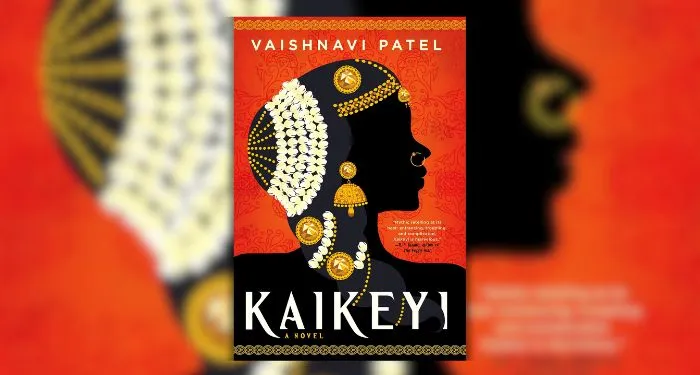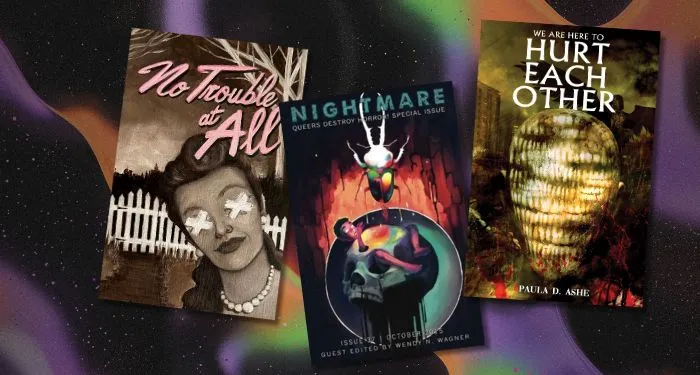Not long after World War II a young black American writer made his escape from what he knew to an unknown he feared less and there found the courage to project this fabulous creation, James Baldwin. However originality happens, Baldwin doesn’t sound like anyone else. His immediate appeal is in his startling personality as a writer.
Born in 1924, Baldwin discomforted the old believers, the black generation that had perfected the mask, much evolved since it was called upon to grin and lie. He dispensed with the mask. It constricted how swiftly he wanted his thoughts to move across the page. Language was a solution to a formal problem, the articulation of consciousness. His voice never aged, the cat on the café terrace staring down the moon when all the squares have gone to bed. For all his keenness of observation and sympathy for the people whose lives he knew or could imagine so well, his was not the voice of a generation. He belonged entirely to himself.
We tend to think of African American literature as an avant-garde tradition. But Zora Neale Hurston and Langston Hughes were dismayed that they had so little commercial success. Baldwin, like Richard Wright before him, was the object of gnawing envy among some black writers because of his fame, especially in those competitive protest days of sneering that the white literary establishment allowed only one black writer per generation to make it big. Then, too, though Baldwin may have felt excluded from the circle of white-guy contenders in the postwar Great American Novel sweepstakes, his posthumous reputation has eclipsed most of theirs, if for extraliterary reasons.
Baldwin was alive to suffering and never wished it otherwise, so much so that he was willing to be among the most vulnerable in the room, at least for a while. He deployed the metaphor of the lover, what he called the anguish and force and terror of love, to describe the blood relationship between whites and blacks, the most profound relationship in the American experience. He thought to pull aside the curtain to expose what was lying around backstage in our racialized psyches. Whom he would forgive and what he could not forget were part of the same grace. Social justice began in the heart. The divine spark in each of us was worth fighting for. His stern Protestantism may be why he was offended by the culture that built the cathedral at Chartres.
He was beyond control, was, finally, his own jurisdiction, but it took some getting there. Seemingly every step in his life is reconsidered in Nicholas Boggs’s moving biography, Baldwin: A Love Story. Boggs has immersed himself in Baldwin’s novels, stories, plays, poems, and essays, published and unpublished; he has absorbed his available letters and journals, the correspondence from friends and editors, as well as the exhausting amount of writing about Baldwin, the articles, the reviews of his work, the critical studies, interviews in print and on camera, and conducted his own significant interviews with those informants who were still around when he was engaged in his research. Moreover, previous biographies of Baldwin, perhaps because they were written by people who knew him, David Leeming the most intimately, become his collaborators. They hand off the baton to Boggs and he goes the distance, because people now want to know everything about James Baldwin. He has come to that.
It’s not as though his being gay was completely unknown in his lifetime. He himself saw to that, taking the risk though warned that Giovanni’s Room might ruin him. Yet he could assert his right to privacy when publicly cornered. Lucien Happersberger is “my best friend,” he told Fern Marja Eckman in an interview for The Furious Passage of James Baldwin (1966). The false objectivity of discretion belongs to a distant past in biography. In Baldwin: A Love Story, “Baldwin was devastated by losing Lucien to Suzy.”
Boggs goes so far as to structure his life of Baldwin according to his subject’s most important relationships with men: “Beauford: the Greenwich Village Years, 1940–1948,” “Lucien: the Paris Years, 1948–1955,” “Engin: the Transatlantic Years, 1957–1970,” “Yoran: the Saint-Paul-de-Vence Years, 1971–1976.” He also pays attention to the transient hustlers Baldwin tried to domesticate. He has tracked every man who can be, including two or three who wished to have their identities withheld. He has stories not told before or put together like this. The writer’s love life is the inescapable frame, the core of meaning.
The poverty Baldwin grew up in is a shock—the clothesline in the kitchen, the children with nothing to eat until their mother got home from her cleaning job at midnight. It is amazing that at his crammed Harlem school he had a white teacher, Orilla “Bill” Miller, who faced down his stepfather and took him at so very young an age to museums, Bette Davis movies, and the theater, including Orson Welles’s all-black Macbeth. In The Devil Finds Work, his memoir of the films that informed his sense of white America’s ideas of black America and of a new black cinema, Baldwin remembers his teacher as the reason he could never hate white people. Miller and her husband were idealistic young Communists. She showed Baldwin a larger world, that he could dare any of its thresholds. Guide and prodigy were reunited after he’d become a star, Boggs tells us. Baldwin had ended his excursions with her in order to conform to the narrowness of the Pentecostal faith he’d embraced as a young teen.
As a fourteen-year-old in the pulpit, he discovered a talent for performance. “The church was very exciting,” he recalled in The Fire Next Time. He recognized the church as a refuge, from himself and from the questions the world might ask about him. Boggs demonstrates that Baldwin was not cut off from the Harlem Renaissance. He’d read its poets. Countee Cullen was among the junior high school teachers who took an interest in him. Boggs can only speculate about whether Baldwin knew the closeted Cullen’s romantic poetry and what it would have meant to him. In any case, Harlem was no longer the culturally vibrant part of town it had been when Baldwin was born. His hard life meant that his grades suffered at the prestigious DeWitt Clinton High School in the Bronx, even as his literary ambitions were encouraged. The mostly Jewish, all-male student body, among them Richard Avedon, represented his secular future after his graduation in 1942.
When he left Harlem, Baldwin found his way downtown to Greenwich Village, by way of wartime factory jobs in New Jersey where he encountered the violence of racism that he would write about in one of his most characteristic essays, “Notes of a Native Son,” published in Harper’s in 1955. Downtown he met the painter Beauford Delaney, who had an unrequited passion for him throughout the years of their intense friendship. Baldwin would remember Delaney as having been to him proof that a black man could be an artist. “Much of this language around the redemptive power of love that was becoming so central to Baldwin’s writing had its roots in the lessons of Beauford Delaney,” Boggs notes. Delaney brought him to the Calypso, a lively sounding restaurant on MacDougal Street run by a woman from Trinidad and frequented by the likes of Claude McKay and Eartha Kitt. She gave him a job and a haven.
In essays such as “The New Lost Generation” (1961) and “Here Be Dragons” (1985), both included in The Price of the Ticket: Collected Nonfiction 1948–1985, Baldwin remembered himself in this period as adrift. He’d abandoned his family, he felt. He experienced gay life as a various, uneasy sexual underground. Moreover, his Greenwich Village after World War II was far in mood from the sexual gladness that Anatole Broyard celebrates in his memoir of that time and place, When Kafka Was the Rage. While the womanizing Broyard passed for white and kept his black Brooklyn family a secret, Baldwin, dark, small, attitudinal if not effeminate, was a conspicuous target for bullies on the Village streets and in its bars. Perhaps his contempt for the Beats and then hippies stemmed from what he regarded as their inability to see what the paradise of dropping out was like for those who had never had a chance to be on the social inside.
A friend arranged for Baldwin to present himself at Richard Wright’s door in Brooklyn in 1944. What he showed Wright of the novel he was working on resulted in a fellowship, though publishers rejected the finished manuscript. He had begun to write book reviews in 1946 but saw himself primarily as a fiction writer, Boggs observes. In 1948, the year Baldwin published both his first short story, “Previous Condition,” and his first essay, “The Harlem Ghetto,” in Commentary, he was awarded a Rosenwald fellowship and used the funds to leave the United States. Europe for black intellectuals and artists meant personal liberty, in spite of imperialism.
In Paris, Baldwin found Wright, the father in his way, the obstacle blocking his path, as he put it in an essay, “Alas, Poor Richard,” published in 1961, shortly after Wright’s death. If anyone had taught Baldwin how to get out of America, Wright had. Baldwin destroyed their connection by publishing “Everybody’s Protest Novel” in a Paris magazine in 1949. The essay denigrates the protest tradition in American literature and asserts that Wright’s best seller of 1940, Native Son, was written from the same pit of theological terror as Harriet Beecher Stowe’s Uncle Tom’s Cabin, a very bad novel, in Baldwin’s view. Philip Rahv reprinted the essay in Partisan Review. In 1951 Rahv published “Many Thousands Gone,” in which Baldwin returns to his attack on Native Son as the last of those angry productions of the Thirties full of the sensationalism of race. Baldwin accuses Wright of self-hatred in his conception of his main character, Bigger Thomas, murderer of an annoying white girl.
Baldwin was making himself up as an artist, and his assessment of Wright was an important step. There was to be no reconciliation. “Alas, Poor Richard” goes from Baldwin saying how crucial Wright’s work was to him, to admitting that Wright had a right to be hurt by what he’d written, to being honest about his literary patricide, but he ends by blaming Wright for being a has-been and saying that he had no choice but to see what he saw. Baldwin later said that Wright was not the polemical writer that Wright maybe thought he was. By this time Baldwin himself was being criticized for having become the kind of propagandist he had rejected Wright for being.
F.O. Matthiessen’s editions of Henry James’s works were much discussed among Baldwin’s friends in Paris in 1948. The GI Bill generation was crossing over to a Europe most Americans hadn’t visited since before fascism. The search for identity in an alien landscape was becoming again a very American theme. Baldwin was saying what his freedoms as a black writer of the new generation were. He chose James, not Wright, as his literary past. It was only going to work for a while. James did not believe that he could use America. Historical imperative was not for him what it would be for Baldwin.
Boggs recalls that Wright in his youth had published “Blueprint for Negro Writing,” in which he is just as wounding in his Marxist belittling of the folkloric Harlem Renaissance—the older generation for him. He admits the Freudian audacity in Baldwin’s dismissal of Wright, but he has a further explanation for the trouble between them: Wright disapproved of Baldwin’s sexuality and the “echoes of a kind of unmanly weeping” in his “sensitive sentences.” Boggs regards Baldwin’s early novels—the homoerotic vibe of Go Tell It on the Mountain and gay love stories of Giovanni’s Room and Another Country—as his “response” to Wright “as a writer and as a man.”
The grim Left Bank hotels explained why Baldwin wrote upstairs at the Café de Flore. The freedom of his escape, the distance from American racism, was compromised by its penniless side. He plunged into a bohemian life and soon met seventeen-year-old Lucien Happersberger. Their intimacy lasted until his death, though their periods of being together were intermittent. Lucien carried Baldwin off to his home in Loèche-les-Bains in the Swiss Alps, where Baldwin wrote the haunting essay “Stranger in the Village” and finished his first novel, Go Tell It on the Mountain. He wanted a “soulmate,” but Happersberger couldn’t provide the “intellectual and emotional support” Baldwin needed. For one thing, he was mainly into girls. Baldwin never got over him, as Boggs tells it, and not only were his subsequent relationships with guys sort of like Happersberger, he also went on searching all his life for that idyll of work and love he’d first known with him, alone in the mountains: the “lost love he perpetually sought to retrieve and could sometimes manage to achieve, at least partially, only to lose it again, was becoming integral to Baldwin’s creative process.”
Though Boggs writes of how the autobiographical expands to a wider focus in Baldwin’s novels, he nevertheless devotes considerable attention to the connections he can make between Baldwin’s life and his work, the “animating relationship between autobiography and fiction,” the people and events he was thinking of, what he was setting off from. The title of Go Tell It on the Mountain, the story of an adolescent’s struggle in the black church, evokes for Boggs not only “the Negro spiritual” but also Baldwin’s “mountainside experience with Lucien.” The “resistance to slavery passed down through generations” is one of the novel’s themes, while “liberation rooted in male intimacy” is another and just as ever-present.
In his early writing on male sexuality, such as the essay “The Male Prison” (1954), Baldwin used ironically the language of his period for “today’s unlucky deviate.” He grasped how much the concept of what was “natural” governed the society that menaced André Gide. He was determined not to get stuck in somebody else’s inadequate definitions. Baldwin was still speaking the language of his period at the beginnings of the AIDS crisis in “Here Be Dragons,” in his skepticism about the sexual revolution and his suspicion that the “androgynous” was just a craze. He was a pioneer in his candor, not in his concepts.
In No Name in the Street (1972), a book-length essay about the civil rights movement and its aftermath, he exposed the sexual aspect of the South’s depravity that he had witnessed in 1957. He was groped by one of the most powerful men in one of the states he visited: “With his wet eyes staring up at my face, and his wet hands groping for my cock, we were both, abruptly, in history’s ass-pocket.” For Boggs, the memory uncovers the sexual tensions hidden in the race relations Baldwin had been writing about—the white man as the inventor of “the nigger’s big black prick.” Race in America is sexual and sex is racial. In Giovanni’s Room, Boggs notes, Baldwin delves “into the tortured heart of white American masculinity.” It used to be said that his essays are about race and his novels are about sex, but Boggs wants to erase the line between genres by finding in his work a unity of message as well as parity between his sexual and racial politics.
Most importantly, Boggs is out to counter the story of Baldwin’s writing life as one of decline in his later years. He wants him to end not in disappointment or irrelevance but with the Legion of Honor. He sees Baldwin’s novels as achievements comparable to his essays. Therefore he is always on the side of Baldwin’s intentions. That not everything by a great writer need be great is beside the point here, even if it’s something to keep in mind when talking about Baldwin. If Beale Street Could Talk, for instance, made for a visually gorgeous film in Barry Jenkins’s hands, yet it’s the least successful of his novels. Joyce Carol Oates was generous in her review of it, praising his use of a first-person female voice. For others, however, the nineteen-year-old narrator starts to sound like James Baldwin pretty quickly into her travails. His distinctive essayistic voice can easily overwhelm the interiority of his characters in his novels and in his best-known short story, “Sonny’s Blues.”
He found it near impossible to settle down to work, yet writing saved him from despair. What he planned usually ended up as something else, Boggs shows: contingencies always led to what he had not expected; assignments and novels changed in the execution of them. His third novel, Another Country, had been a part of a larger work, though it is long enough on its own. In 1957 he worked on it at the MacDowell Colony, he worked on it in Greenwich Village, and then he abruptly went back to Paris, where he was off and on with it, in between other things. In 1961, some months after the publication of Nobody Knows My Name, his essays about the contemporary American scene, Baldwin finished Another Country. His youth had ended and he had become a writer, he said:
And the summer came, the New York summer, which is like no summer anywhere. The heat and the noise began their destruction of nerves and sanity and private lives and love affairs. The air was full of baseball scores and bad news and treacly songs; and the streets and the bars were full of hostile people, made more hostile by the heat…. It was a city without oases, run entirely, insofar, at least, as human perception could tell, for money; and its citizens seemed to have lost entirely any sense of their right to renew themselves. Whoever, in New York, attempted to cling to this right, lived in New York in exile—in exile from the life around him; and this, paradoxically, had the effect of placing him in perpetual danger of being forever banished from any real sense of himself.
Another Country is one of the few novels of its time in which the interracial couple is still together at the end. Henry James’s “perception at the pitch of passion” translates into Baldwin’s hero and the black girl he’d fallen for being willing to talk regardless of the limitations of language, when black people and white people could sit down in an equality of self-consciousness and say the most helpless things to one another.
The work that emerged from the turmoil of Baldwin’s personal life is remarkable in its ambition. In a terrific restlessness of spirit, he carted his manuscripts to Paris, Yaddo, Corsica, Harlem, Greenwich Village, Fire Island, MacDowell, London. The more money he earned, the more impulsive and far-flung his mood-answering exits as he gave up on his latest love story. Then, too, success put him on the “lecture-celebrity circuit” in the US that he often swore to retire from. His life, Boggs writes, took on a “pattern of back-and-forth transatlantic travel”; he described himself as a commuter, not an exile. He crossed paths with W.H. Auden and Frank O’Hara; he corresponded with Kay Boyle, Katherine Anne Porter, Gwendolyn Brooks. And he loved Lorraine Hansberry.
He dreaded the United States, but its pull was in the mass character the civil rights movement had assumed with the Montgomery bus boycott in 1956. Baldwin traveled to Charlotte, Tallahassee, Atlanta, Montgomery, and Birmingham. He had an apostate’s awe for Martin Luther King Jr.’s inviolability. In 1963 a secret meeting of various prominent blacks, including Baldwin, with Attorney General Robert Kennedy became so acrimonious that it got into the news. “I’m a controversial cat,” he said. He called himself at first a messenger, one who was helping to get the message out. He’d been truly terrified in the South, and he could still get beaten up in Greenwich Village. He was at the March on Washington in the summer of 1963 but, like Bayard Rustin, one of the organizers, he was not asked to speak, because his being gay was considered a liability.
He didn’t react strongly to Eldridge Cleaver’s insults to gay black men in an article that Cleaver wrote about him in Ramparts in 1966 and included two years later in Soul on Ice. He said that he was hurt by Cleaver’s remarks but understood an ex-convict’s homo panic. The Black Panther Party was under siege by the FBI, and Baldwin’s dodging of an open dispute was an expression of his solidarity. Boggs reveals that he eventually gave money to Cleaver, presumably for his legal defense, and concludes that his wish for acceptance by the younger generation led him to mimic “their homophobic and misogynistic stances.” Black militancy was intimidating, but Baldwin was proud. Perhaps he also understood that Cleaver had been gunning for the father in his way, like Amiri Baraka had when he derided Baldwin as the white cocktail party darling.
Boggs notes that the conflict between being an artist and being an activist intensified for Baldwin following the assassination of Malcolm X in 1965. The paranoia of the times was real, and it got to him. Even to be a witness, as he had come to call himself, was not without risk. He’d get a phone call and someone would say he was going to kill him. Baldwin manages to convey in his writing the sense of physical danger that hung over interracial assemblies. In some ways the civil rights movement needed the “media frenzy,” and he took every opportunity to join in, crisscrossing the country for speaking engagements. His unaffiliated eloquence and literary reputation made him a black spokesman in demand—in print, on campus, in the television studio.
Boggs keeps up with Baldwin’s political commitments, his chaotic private life, and his professional battles, meetings, hopes, defeats. He had a fierce appetite for opportunity, often shepherding several projects simultaneously. His dream of love was more than matched by his wish to have a success in the theater or to write for film. Boggs gives detailed accounts of the off-Broadway and Broadway productions of his plays The Amen Corner and Blues for Mister Charlie, his efforts to make film deals for Blues for Mister Charlie and Giovanni’s Room, and many other script ideas. It took up a lot of Baldwin’s energy. The bug got him early, when he started hanging around with Elia Kazan at the Actors Studio in the 1940s. His Beverly Hills poolside fantasy of adapting Alex Haley’s The Autobiography of Malcolm X was, in its way, the low point. He was wrangling with Columbia Pictures over casting it when he learned of King’s assassination in 1968.
“Something has altered in me, something has gone away,” Baldwin lamented in No Name in the Street. “I don’t believe in the wagons that bring bread to humanity,” he said, repudiating Dostoevsky. He was criticized for giving in to bitterness about America’s racial future. A fatalism had taken hold, and he went from saying that white Americans had to change to saying that white Americans were incapable of change. White people were prisoners and didn’t know it. Black people were prisoners of what white people didn’t know about themselves. Baldwin talked about pain, not pathologies. Hannah Arendt had a sense of his innocence and warned him that the warm qualities of oppressed people never survive the hour of liberation.
He’d already fallen for Istanbul, and by 1970 it had become, Boggs says, the place where he could breathe, where he discovered an expatriate life of community and collaboration. He directed a Turkish company in an emotional production of Fortune and Men’s Eyes; he found friends among the American faculty of Robert College, many of whom were abroad for reasons similar to his. He may have disliked bohemia, but he could not have lived anywhere else. He took to calling himself more of a poet than a witness. He could disappear from the world and write in Istanbul. Much of the most interesting recent scholarship about Baldwin concerns his years in Turkey, where he spent a considerable amount of time until the military coup of 1980. Baldwin was at the same time getting more familiar with Saint-Paul-de-Vence, which was to become what Boggs calls his “most enduring place of respite,” and he died there in 1987 with Happersberger among the few at his bedside.
Virginia Woolf’s novels frustrated Mary McCarthy because they had not been touched by scandal; Woolf would not stoop to gossip in them, she said. Baldwin didn’t have that problem. He attempted in his last two novels, Tell Me How Long the Train’s Been Gone and Just Above My Head, to reproduce the winning depth of Another Country. Boggs views Baldwin’s last works, especially the play The Welcome Table, as his continuing to push the boundaries of what it meant to be a black writer, even if the cultural winds had turned against him. His writing life did have an arc; his philosophy did change over time. And time has gone by. The Sixties loom large as the era of the democratization of culture, of resistance to state disrespect of persons. To look for lessons in what he wrote makes him a figure like Walter Benjamin or Michel Foucault or Frantz Fanon: we find in him what we need to.
He was a freer person in the essay, in part because it was to him an epistolary form. For Baldwin, Boggs observes, the letter afforded the occasion for deeper reflection than any other literary genre. His most powerful work about the American racial situation, The Fire Next Time, is structured as two letters, recalling the epistles of Christian liturgy. It’s a pity he did not write an epistolary novel. How much Boggs was able to quote from Baldwin’s letters and journals is unclear, but his biography by its very fullness makes the case for the publication of them on their own.
Against the odds, Baldwin escaped the slum he’d grown up in and made real the precocious boy’s dream of becoming rich and famous so that he could take care of his mother. He supported his entire family. He tried to come to the rescue of troubled friends. He was sure that he was giving a gift when he read aloud from his works in progress to friends on their birthdays or to strangers in hospitals. But he could be self-involved: he scarcely responded to a close friend’s letter saying that she had been raped by someone they both knew. He had destructive “night-crawling ways”; his life was a brokenhearted mess. He could be a nightmare houseguest. He was a drama queen, one of whose suicide attempts was to fill his pockets with sand and wade into the ocean. He drank and smoked between heart attacks. Boggs doesn’t call him manic-depressive.
And lo a voice came to him as to a prophet. “I mean to accept something I have never accepted before. I must, I have a lot of work to do. I’m the best writer to be found in my poor, mad country at the moment which means I stand before a terrible tribunal which will not forgive me if I fail.” James Baldwin threw his troubles over, and was “a moment in the conscience of mankind,” as Anatole France said of Émile Zola in his funeral oration.



















 English (US) ·
English (US) ·